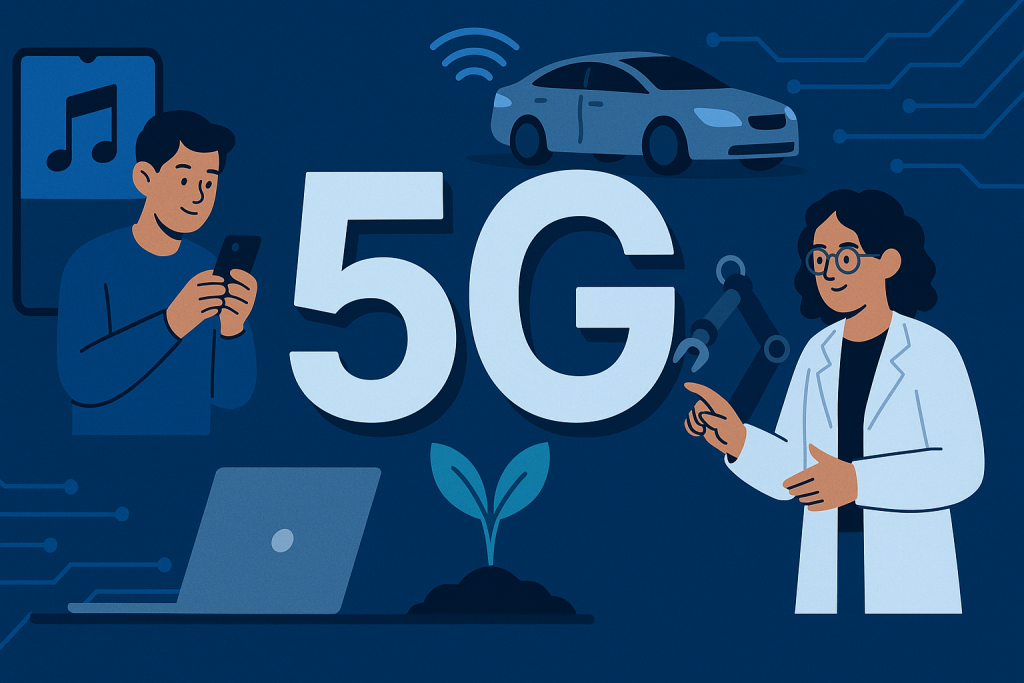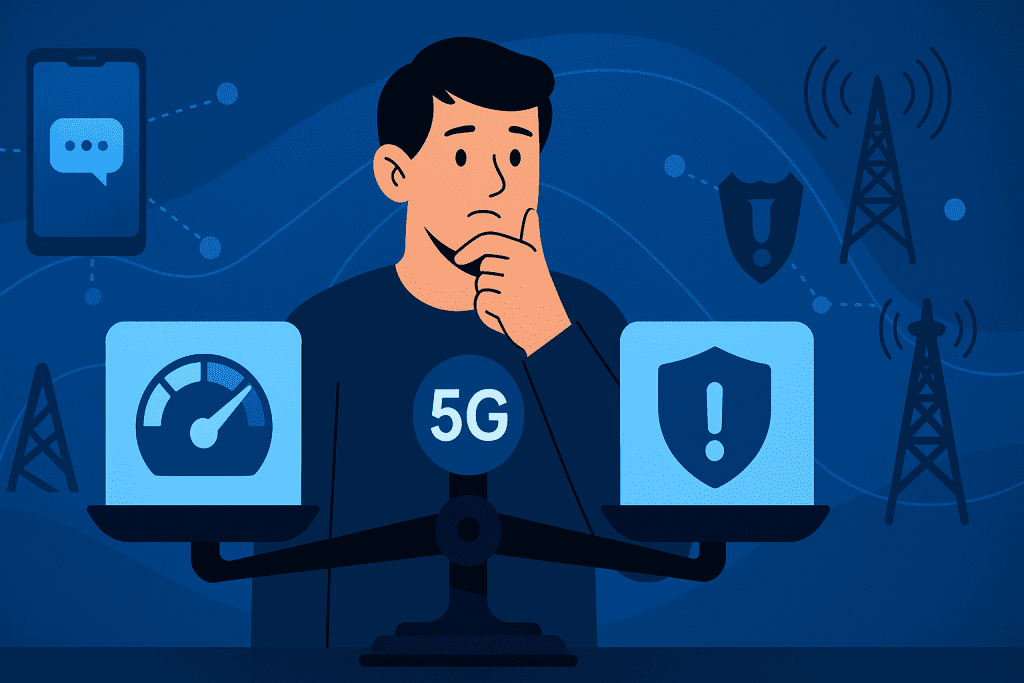When we talk about groundbreaking innovations in technology, 5G often takes center stage. It’s not just an upgrade from 4G—it’s a revolutionary leap that redefines speed, connectivity, and how we experience the digital world. For businesses, governments, and everyday users, understanding the definition of 5G offers a glimpse into a future powered by smarter cities, real-time communication, and immersive entertainment. In fact, it represents one of the most significant advancements in digital infrastructure since the invention of the internet itself. This generation of wireless networks promises to transform daily life—from the way we shop, learn, and socialize to how industries operate on a global scale.
So, whether you’re streaming a 4K movie, attending a virtual conference, or exploring augmented reality, learning about it helps you see how it connects everything seamlessly. By looking deeper into its history, mechanisms, and applications, we can better appreciate why experts call it one of the most powerful technologies of the modern era.

What is 5G?
Short for fifth-generation wireless technology, 5G is the latest standard for mobile networks. The definition of 5G highlights its ability to deliver ultra-fast data speeds, lower latency, and the capacity to connect millions of devices simultaneously. Unlike its predecessors, it doesn’t just enhance mobile phone performance; it creates an ecosystem where machines, vehicles, and smart devices communicate in real time.
It’s often referred to as the “network of networks” because it integrates with technologies such as the Internet of Things (IoT), virtual reality (VR), and autonomous systems. In short, the meaning of 5G is about connectivity without limits—bridging people, industries, and devices into one powerful digital framework. Other terms used to describe it include next-gen mobile network, future-ready wireless, and ultra-broadband connectivity.
Breaking Down 5G Technology
When we peel back the layers of what is 5G, several key components stand out:
Speed & Bandwidth
Downloads are up to 100 times faster than 4G, enabling users to grab large files, stream ultra-high-definition video, and use cloud-based services without lag.
Low Latency
With a response time as low as 1 millisecond, it enables groundbreaking applications like remote surgery, autonomous driving, and AR gaming.
Massive Connectivity
The definition of 5G includes support for millions of devices per square kilometer, a crucial feature for smart cities and IoT ecosystems.
Network Slicing
Customized virtual networks can be allocated to different industries, such as healthcare or manufacturing, offering tailored connectivity.
Think back to how the transition from 3G to 4G revolutionized mobile apps like Uber and Spotify. With this generation, we’re unlocking possibilities like smart factories, holographic communication, and more efficient grids that will transform economies worldwide.
History of Development
The journey of 5G traces back to research in the early 2010s. By 2019, the first commercial networks launched in South Korea and the United States. Since then, adoption has accelerated worldwide, driven by demand for faster, more reliable networks.
| Year | Milestone | Impact |
|---|---|---|
| 2010s | Research and standardization begin | Foundations laid for next-gen wireless |
| 2019 | South Korea launches first network | Demonstrated viability of global rollout |
| 2020–2023 | Rapid worldwide expansion | Adoption across Asia, Europe, and the US |
| 2025 | One-third of global coverage | Global integration into industries |
This timeline shows that the meaning of 5G is more than telecom—it represents a digital era reshaping how people and industries interact.
Types of 5G
Not all frequencies are the same. The technology is deployed across three main bands:
Low-Band
Broad coverage but slower speeds, ideal for rural areas.
Mid-Band
Offers a balance between speed and reach, making it the most widely used.
High-Band (mmWave)
Provides lightning-fast speeds but has a limited range, perfect for dense urban centers.
| Type | Coverage | Speed | Best Use Case |
|---|---|---|---|
| Low-Band | Wide, rural areas | Moderate | Broad connectivity |
| Mid-Band | Balanced | High | Cities and suburbs |
| High-Band | Limited | Extremely high | Stadiums, urban business hubs |
This layered approach ensures the definition of 5G adapts to environments ranging from rural towns to bustling megacities.
How Does it Work?
It works by transmitting signals across higher frequency bands known as millimeter waves. These bands allow faster data transfer but require a dense network of small cell towers to maintain coverage.
Essentially, the meaning of 5G revolves around efficiency: connecting more devices with less lag. Advanced tools like Massive MIMO (Multiple Input, Multiple Output) and beamforming direct signals with precision, ensuring stable connections even in crowded areas. Data is routed intelligently, and network slicing ensures each use case—be it healthcare or entertainment—gets optimized performance.
Think of it as a highway system: previous generations had fewer lanes, causing traffic jams during peak hours. It is like building superhighways with smart traffic lights that keep vehicles moving smoothly, no matter how many are on the road.
Pros & Cons
Before embracing it, it’s important to weigh the benefits and challenges:
| Pros | Cons |
|---|---|
| Ultra-fast speeds for downloads and streaming | High infrastructure costs for deployment |
| Real-time responsiveness for critical apps | Limited coverage in rural areas initially |
| Supports IoT growth, enabling smart cities | Potential security risks with mass devices |
| Customizable networks for industries | Device compatibility challenges |
| Enhanced capacity for large gatherings | Ongoing health concerns (though unproven) |
The pros clearly outweigh the cons for most governments and enterprises, though successful rollout requires investment, regulation, and user education.

Uses of 5G Technology
The real power of it becomes clear when we look at how leading organizations and platforms describe its applications. Each resource provides a unique perspective on its role in reshaping industries and everyday life:
- Qualcomm. What is 5G?
Qualcomm showcases how it unlocks breakthroughs in mobile experiences, IoT ecosystems, and edge computing, helping devices communicate with unprecedented speed and efficiency. - 3GPP. 5G System Overview Explains the 5G System (5GS) architecture and releases (from Rel-15 through 5G-Advanced), covering NR, core network functions, and interoperability that enable network slicing and Massive MIMO.
- Ericsson. Mobility Report
Ericsson provides data-driven insights into 5G adoption, exploring how faster connectivity is changing video consumption, enterprise networks, and global communication patterns. - Investopedia. Definition of 5G
Investopedia explains it in simple, practical terms, outlining its benefits, challenges, and financial impact on businesses and consumers. - ITU. International Telecommunication Union
The ITU sets global standards for 5G deployment, ensuring interoperability and security while promoting its applications across borders and industries.
Resources
- Qualcomm. What is 5G?
- 3GPP. 5G System Overview
- Ericsson. Mobility Report
- Investopedia. Definition of 5G
- ITU. International Telecommunication Union
